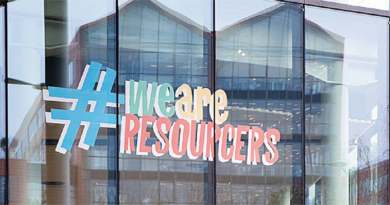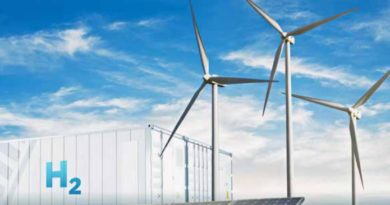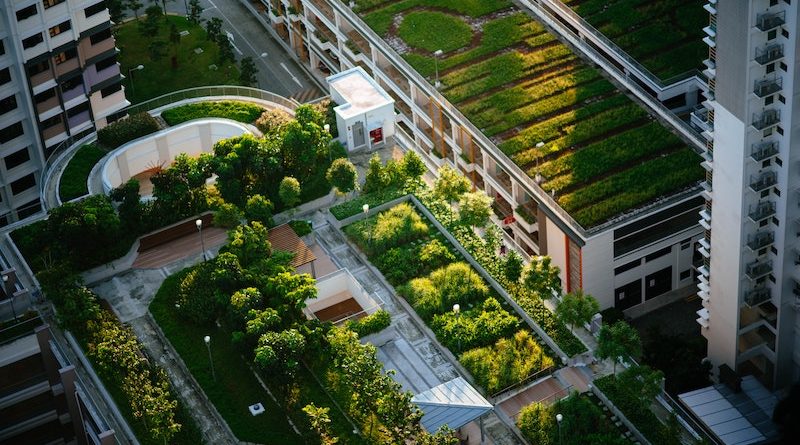
Mission Zero for healthy living spaces: 3 actions to get buildings on track with climate science
COP26 can bring us back into the game for remaining below a temperature increase of 1.5 degrees. It is a matter of urgency that climate talks give special consideration to buildings. The figures are well known:
Almost 40% of global carbon emissions stem from buildings. Count embodied emissions and you add 10% on top. By 2050, the world’s building stock will double and 70% of the global population will live in cities.
More importantly: We live, we work, we breathe and laugh in buildings. A modern and carbon-free built environment is above all a societal pact, a promise for a better life, for peace of mind and health.
And yet: only 53 out of 186 countries that have submitted Nationally Determined Contributions to the United Nations Framework Convention on Climate Change mention energy efficiency in buildings.
The majority do not even specify decarbonisation targets for the sector, or for the greening of heating energy carriers. We have to close this gap: energy efficiency, the greening of energy carriers1, and decarbonisation targets for buildings must be included in the next cycle of NDCs with a firm commitment to a net-zero building stock.
This is our mission zero for healthy living spaces, a clear priority for the COP26 rendezvous.
3 actions to get buildings on track with climate science
The EU green deal and the so called “FitFor55” legislation2 could very well be the recipe for success. The political process at EU level has just started, but it could set the benchmark for a transformative built environment around (1) people, (2) technologies and (3) financing.
Action #1
Put people first to improve living spaces for all
Everything starts with people. The corona crisis has shown how important our homes and roofs are, how much the indoor air quality, light and temperature impacts our health and spirits. We are at a historic turning point. The awareness and willingness to invest in better homes has never been higher. People have never been more aware of the impact of climate change. They demand climate solutions.
Mission zero for buildings, a giant renovation wave, presents a unique chance to improve the living conditions of millions of households. In France alone, bad indoor air quality costs 18 billion euros per year for the public health system.
In 2019, about 34 million Europeans were not able to keep their homes adequately warm, while over 50 million were living in homes with leaking roofs, damp walls or poor foundations3. Since 2000, the share of the household budget that low-income families spend on energy has doubled.
We must pay special attention to energy poverty and set adequate safeguards. The Energy Efficiency Directive proposal rightly calls on Member States to prioritize vulnerable households. A new Social Climate Fund will be created with the revenues from the new Emission Trading Scheme (ETS) for buildings and transport. It is also foreseen that this new ETS has a stability reserve, a sort of carbon watch-dog, to avoid skyrocketing carbon prices. Finally, the revenues arising from ETS must be allocated to the sectors where they arise – in order to balance rising energy bills via energy renovation.
Action #2
Accelerate emission cuts – scale the uptake of efficient, renewable technologies and sustainable energy carriers
Most people spend 80% of their energy bills on heating and hot water production. Yet the installed stock of heating and cooling systems is aging and only 20% is supplied by renewable energies. Setting a replacement target of 6% per year for heating systems, vs 4% today, is a no-regret starting point at EU level.
Many cities have already proven that it is possible to get buildings on track with climate science. Copenhagen is on the way to achieving climate neutrality by 2025. Over 10,000 mayors have committed to climate neutrality within the Covenant of Mayors.
Significant cost savings associated with lower electricity grid investments
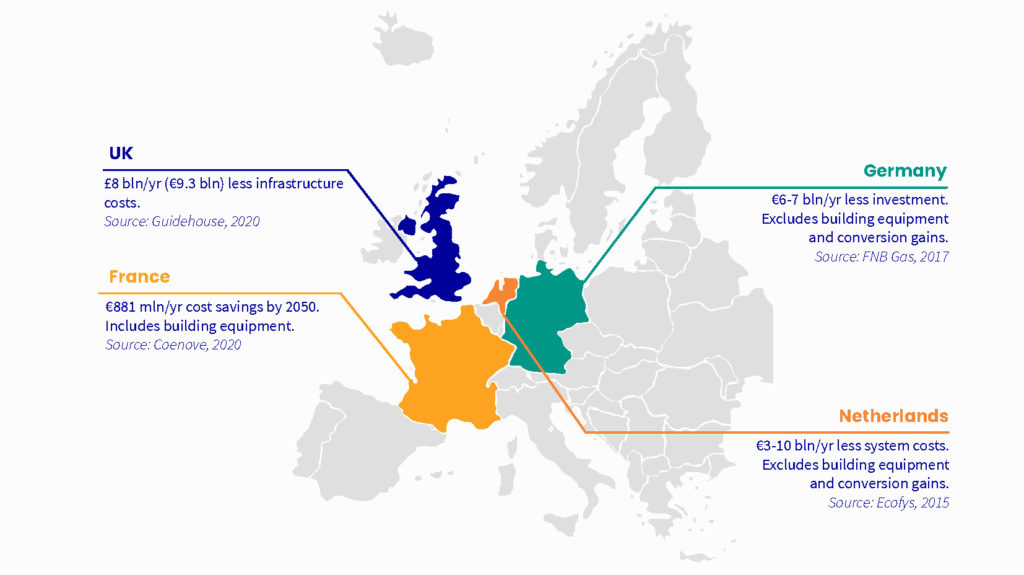
Source: Unlocking the hybrid heating potential in European buildings, Guidehouse for Hybrid Heating Europe, 2021
We have indeed the heating technologies to engineer the net-zero world: heat pumps, renewable-ready combustion technologies, gas/electric hybrid solutions, reduced heating needs by envelope upgrades, district heating and digitalisation. This is the toolbox, combined with innovative business models.
We need every option to tackle the heterogeneity of Europe’s building stock, the range of incomes and individual needs of households, and national choices of energy carriers. Diverse situations require diverse answers.
The electrification of heating via heat pumps is clearly the backbone of mission zero. For me, a successful heat pump wave meets the criteria below: they operate on sustainable refrigerants, with low noise levels and optimized electricity use; they are coupled to on-site PV, storage and self-consumption, and they have the digital functionalities to be fully integrated into the electricity grid, for example, for demand response.
Green gases are another necessary complement. The heating industry is adapting, as we speak, all combustion technologies to make them renewable-energy ready, such as boilers and distributed cogeneration. This is a prerequisite to avoid the lock-in of fossil fuels in buildings and increase the resilience of the energy system.
I am conscious that the combination “hydrogen” and “heating” is contested by some, e.g. because a heat pump is more efficient than hydrogen. But this argument is a bit old-school in my view. It fits a world with dispatchable coal and nuclear, but not an energy system built on intermittent renewables. Because well-adjusted volumes of hydrogen or other green gaseous fuels injected into existing, repurposed, gas infrastructure, can complement the electrification mega trend: peak power demand is reduced significantly compared to full electrification of heating. That aids system resilience especially in winter during periods with low wind output, which happens regularly, and during extreme weather situations which occasionally challenge system stability.
Action #3
Secure adequate financing and qualifications
The building sector represents over 40% of all investment needs for the green transition in the EU. Over 185 billion euros per year is needed to reach the 40% emission reduction target by 2030 (vs 1990), according to the European Commission. In order to reach 55% emission reduction, this number will have to substantially increase4.
To get there, we have to leverage the private sector; aggregation and de-risking are the key words.
The taxonomy regulation will be essential to steer climate financing. Staged renovation pathways should also be supported. The 750 billion euro EU recovery fund combined with the EU budget, set the right framework to boost investments in climate action and the building sector specifically – providing a once-in-a-lifetime opportunity to steer finance for a sustainable transition.
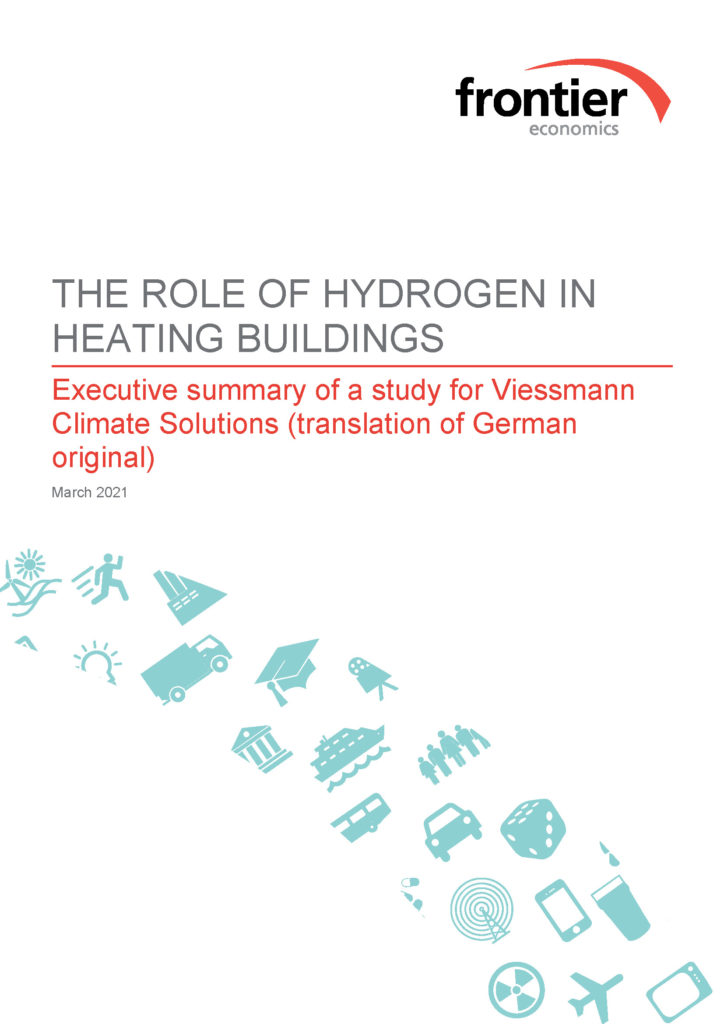
https://www.frontier-economics.com/media/4592/hydrogen-in-the-heat-sector.pdf
And further information on:
https://www.viessmann.family/en/what-we-offer/climate-solutions/hydrogen
Mission zero also requires many skilled jobs. We expect an unparalleled job boost in a sector that already employs about 10% of the global workforce. The EU has estimated that by reducing the carbon emissions of buildings by the necessary 60% (by 2030 vs 2015), more than 160,000 new jobs will be created. For the job market to benefit from this potential, swift action is needed, however. Already today, the sector suffers from severe labour shortages. Targeted information campaigns and recruitment programmes are key to filling the recruitment gap, including with women. Equipment makers can of course alleviate this challenge with innovative solutions: intuitive digital tools will help installers and owners to maintain and optimize energy use in real-life. Plug-and-play modernization solutions will reduce installation time and cost.
With the help of people, technologies and finance, mission zero can become a reality. It is time to unleash a new societal pact along these three actions. Then, the Fit for 55 package can not only be a roadmap for the European transition, but a blueprint for the built environment globally. Let COP26 set a movement at the global scale for healthy living spaces. And the benefits of a net-zero building stock will be felt by all.
1 World Business Council for Sustainable Development, Transforming the built environment
2 “Fit for a 55% GHG reduction” by 2030 vs 1990
3 Right to Energy Coalition, 2021
4 Commission Staff Working Document: Identifying Europe’s recovery needs, 2020


